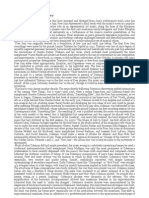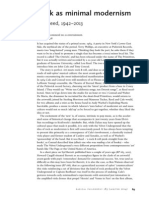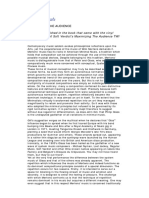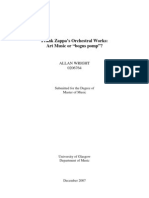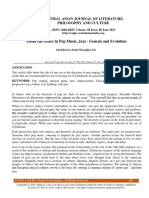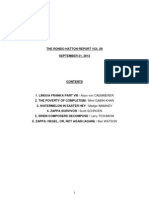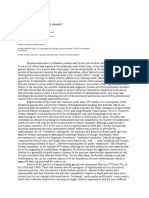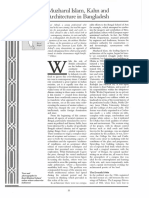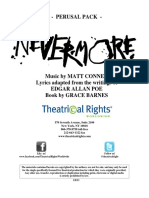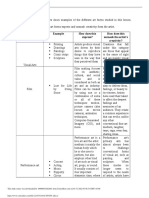0% found this document useful (0 votes)
156 views9 pagesVanHoolst Helena PaperZappaNonsensical
This document analyzes Frank Zappa's album Uncle Meat (1969) and argues that its nonsensical elements do not diminish but rather add to the seriousness of Zappa's compositional skills. It examines the album's context as a film soundtrack, its overall complex structure employing variation forms, and its use of modernist and postmodernist techniques in individual songs.
Uploaded by
Helena Van HoolstCopyright
© © All Rights Reserved
We take content rights seriously. If you suspect this is your content, claim it here.
Available Formats
Download as DOCX, PDF, TXT or read online on Scribd
0% found this document useful (0 votes)
156 views9 pagesVanHoolst Helena PaperZappaNonsensical
This document analyzes Frank Zappa's album Uncle Meat (1969) and argues that its nonsensical elements do not diminish but rather add to the seriousness of Zappa's compositional skills. It examines the album's context as a film soundtrack, its overall complex structure employing variation forms, and its use of modernist and postmodernist techniques in individual songs.
Uploaded by
Helena Van HoolstCopyright
© © All Rights Reserved
We take content rights seriously. If you suspect this is your content, claim it here.
Available Formats
Download as DOCX, PDF, TXT or read online on Scribd
/ 9


















